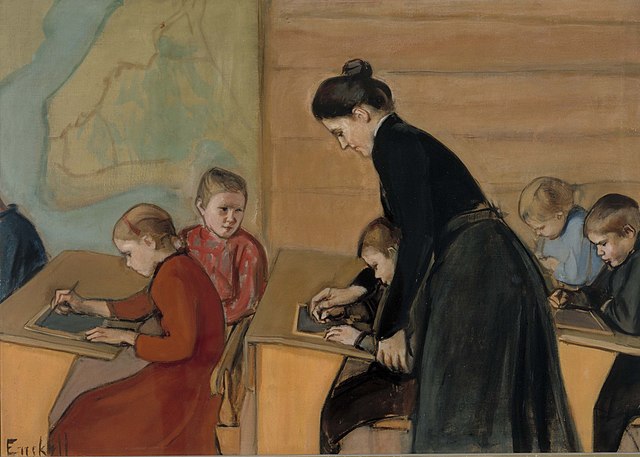
Avoiding spelling mistakes
Names of Ajarns
When we are writing theses or academic research projects, we often must write the name of ajarns or other significant Thai writers and researchers in Romanized form.
When this happens, we should try not to guess. Even if we think we are sure of the Romanized form of a Thai name, it is respectful to verify that we have spelled it correctly. The alternative would be to give a wrong or unfamiliar Romanization for a Thai ajarn, and this might be seen as disrespectful.
If we Google the Romanized name of ajarns before we put them in our academic research projects and theses, we are more likely to get them right.
We should look for authoritative sources online for the spelling of Romanized names.
For example, a Google search for the Romanization Dr. Puey Ungpakorn and also the Romanization Dr. Puey Ungphakorn both produce results.
We may note that the Romanized spelling Dr. Puey Ungpakorn lists about 5,100 results in response to a Google search, while the Romanization Dr. Puey Ungphakorn produces about 129,000 results.
Just because one Romanization is used more often, we cannot be sure that it is the correct one, or the one that is most appropriate for us to use in our academic research project or thesis.
Instead, we might take a closer look at the results and see where the name is Romanized a certain way. If these results are from universities and other official institutions, we can be assured that the Romanized version is authorized and commonly used.
For Dr. Puey, we may see that among the Google search results for the Romanization Dr. Puey Ungphakorn includes links to the Puey Ungphakorn Institute for Economic Research; the Puey Ungphakorn Library on Rangsit Campus; the Puey Ungphakorn Archives at the Thammasat University Library; the Puey Ungphakorn School of Development Studies; the Puey Ungphakorn Monument; the Bank of Thailand’s (BOT) webpages about Professor Dr. Puey Ungphakorn’s Centennial Anniversary; the Dr Puey Ungphakorn Centenary Scholarship at the London School of Economics (LSE); the Puey Ungphakorn Artistic Park project; and other official uses.
Since all of these serious and authoritative websites use the Romanization Dr. Puey Ungphakorn, let us compare the results we get from a Google search for the Romanization Dr. Puey Ungpakorn.
While this second spelling does appear online, it is not associated with official organizations, especially university faculties or libraries.
We may conclude that it is safer to use the Romanization Dr. Puey Ungphakorn.
The same approach may be useful when we must spell out thesis advisors’ names in our thesis and abstract, or cite names of researchers in our academic research projects.
Google the spelling we are considering to see how it appears most frequently in English language sources. If an ajarn’s name is Romanized in a certain way on a faculty website, then we may be confident that this is an approved way of Romanizing the Thai name. Similarly, if an ajarn has published an article or book in English, the Romanized version of the name that we see on the publication was presumably also approved by the ajarn.

Ongoing research
As all Thammasat University students know, the Romanization of Thai language has been an ongoing process for many years. Research has been conducted to make this effort work more quickly and smoothly.
An article from the Proceedings of the Second International Workshop on East-Asian Language Resources and Evaluation, Automatic Romanization for Thai (1999), was written by Thatsanee Charoenporn, Ananlada Chotimongkol, and Virach Sornlertlamvanich of the Software and Language Engineering Laboratory, National Electronics and Computer Technology Center (NECTEC),
The authors’ abstract noted:
There is a common need in romanizing words in the languages other than English for the global communication. Especially the romanization of proper names are inevitable. Since there is no a mutual standard, writing a Thai word in English letters is not trivial, and it is quite a labor intensive task if it cannot be computerized. In this paper, we propose a new romanization system aiming at initiating the standardization process and implementing in a computer assisting module. The romanization is not a simple one-to-one matching. We need some linguistic rules to restrain the possible combination in terms of pronunciation availability and syllable construction. Before romanizing a Thai syllable, we need to break a word into a sequence of syllables. From the sequence of syllables, we then generate a roman script for it. In this paper, we prepare a syllable construction rule to drive the NFA to produce all possible sequences. The probabilistic n-gram is introduced to find the most probable one. Since there are a lot of ambiguities in breaking a word into a sequence of syllables, we rank the candidates according to their probabilities and apply a general beam search method to reduce the search space.
The article observed:
At present, there is no rigorous rule to write a Thai word in roman script. A word, for example, “วิรัช [wi-rat] which is a personal name, is generally found in various spellings such as: Virach, Virat, Virax, Wirach, Wirat, etc. This can be found in writing a person name in a passport, street names, city names and so on. The problem is not trivial if we want to identify a word in more precise way. In 1908, the problem was unveiled when the first geographical map was created by a cooperation group between French and Thai governments.
Another research paper, Constructing a Rule Based Naming System for Thai Names Using the Concept of Ontologies, was written by Ajarn Chakkrit Snae of the Department of Computer Science, Naresuan University, Phitsanulok, and published in the Proceedings of the Workshop on Learning Structured Information in Natural Language Applications (2006).
Ajarn Chakkrit’s abstract explained:
Names are important in many societies, even in technologically oriented ones which use ID systems or other ways to identify individual people. Names such as personal surnames are the most important as they are used in many processes, such as identifying of people, record linkage and for genealogical research as well. For Thai names this situation is a bit different in that in Thai the first names are most important. Even phone books and directories are sorted according to the first names. Here we present a system for constructing Thai names from basic syllables. Typically Thai names convey a meaning. For this we use an ontology of names to capture the meaning of the variants which are based on the Thai naming methodology and rules.
His article went on to suggest:
Names are used for identifying persons, places, things and even ideas or concepts. Names serve for labelling of categories or classes and for individual items. They are properties of individuals which are of greater importance in most communities. In technological oriented societies such as modern Western the reference between names as a label and the person is not as obvious as in small tribal societies. This is especially true where names are stored within large information systems. This includes government, medical, educational and even commercial records which are kept about individuals. Names are the most important referrer to a person even if there are numbering systems like ID numbers because such systems are not universal. Names are often queried in a different way than they were entered. Names represent complex lexical structures which have to be handled systematically for data entry, storage and retrieval in order to get sufficient recall or precision the retrieval process in. In this paper we present a first account of our findings on constructing Thai names with the help of an ontology of names as well as a working methodology for the naming process in Thai culture.

(All images courtesy of Wikimedia Commons)
